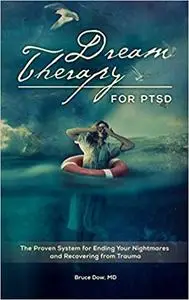Bruce M. Dow MD, "Dream Therapy for PTSD: The Proven System for Ending Your Nightmares and Recovering from Trauma"
English | 2015 | ISBN: 1440837406 | 145 pages | EPUB | 0.25 MB
English | 2015 | ISBN: 1440837406 | 145 pages | EPUB | 0.25 MB
In this series of clinical vignettes, a board-certified psychiatrist and life fellow of the American Psychiatric Association illustrates the effectiveness of dream therapy in treating posttraumatic stress disorder (PTSD).
Posttraumatic stress disorder (PTSD) can be disabling and difficult to treat, often leading to depression, suicide, and homicide in extreme cases. In this clinical-based reference, acclaimed psychiatrist and neuroscience researcher, Bruce Dow, provides a step-by-step approach for implementing dream revision therapy―a treatment proven to eliminate nightmares, flashbacks, anxiety, and other debilitating effects of PTSD. Drawing from work with patients in both military and civilian settings, Dow shows how to utilize imagery rehearsal exercises to help mitigate the effects of the illness.
The vast majority of the book's 11 chapters focus on clinical case studies of patients who have suffered under the effects of the disease―for example, a hotel employee who witnesses a gory suicide; a female police officer whose career-ending crash in her patrol car brings back traumatic memories from childhood; and Vietnam combat veterans with recurrent posttraumatic nightmares. Each vignette offers details of the dream revision method along with clinical tips for ensuring its success. The final chapter features descriptions of brain mechanisms of PTSD and dream revision.
Shares techniques to end PTSD nightmares and flashbacks
Lessens the exposure to trauma, making the treatment more benign than most other methods
Offers strategies for treating individual patients as well as groups of patients
Features complete descriptions of 140 dreams along with approaches for lessening their detrimental effects
Provides a comparison between common stress and PTSD



